Laser Engraving is Expanding

My first laser was an Ortur 15 watt unit that I bought new, and made the enclosure than you see in the right side of the picture. That unit served me so well, that I purchased another Ortur 20 watt laser to put in the cabinet and moved the 15 watt unit to the cabinet that is on the left. When I moved it, I expanded the size of the cutting area by about 50% larger. I also upgraded the PC running the machines to a Windows 10 unit that works far more efficiently. Both of the lasers have been upgraded with drag chains and Z axis adjusters, the larger unit also has air assist.
Shop Made Tools
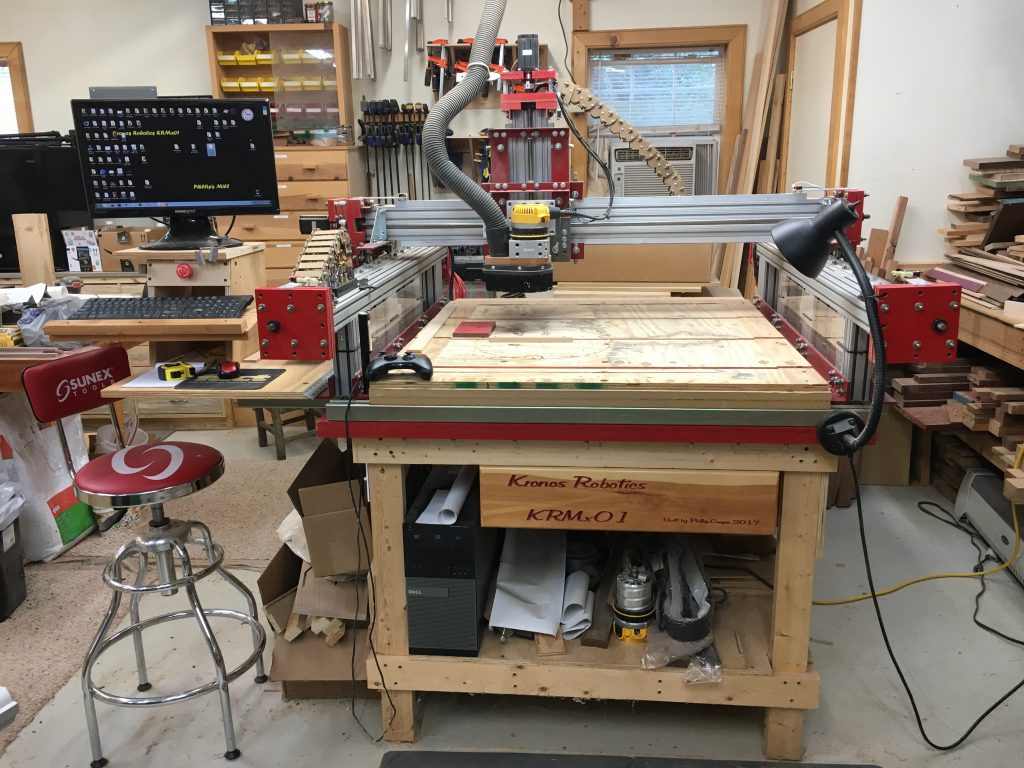
More and more shops are including a CNC machine, however not many have one that was made onsite. I priced a Shop-Bot in 2015 ($13,000), and decided that either I make one or give up on having one. I found Kronos Robotics in a web search and found the CNC build project given was something I could manage. After pricing all the materials, I figured that $3,000 was a much more managible number for me, including everything needed to make parts. I modified a few things along that I felt might be an advantage to me, and the very first run was successful. I use V-Carve Pro and Mach 3 which is very easy to learn and not resource taxing so far as the compute goes. I have updated the machine since this picture was made. One of the best changes was the guide rails, I went from v-bearings to a rail and block system, much more stable and far less maintenance. I’ve changed the spoil board three times since the machine was constructed using Baltic Birch plywood, I get over a year of use out of that before I feel the need to replace it.
Machines not shop made, but necessary
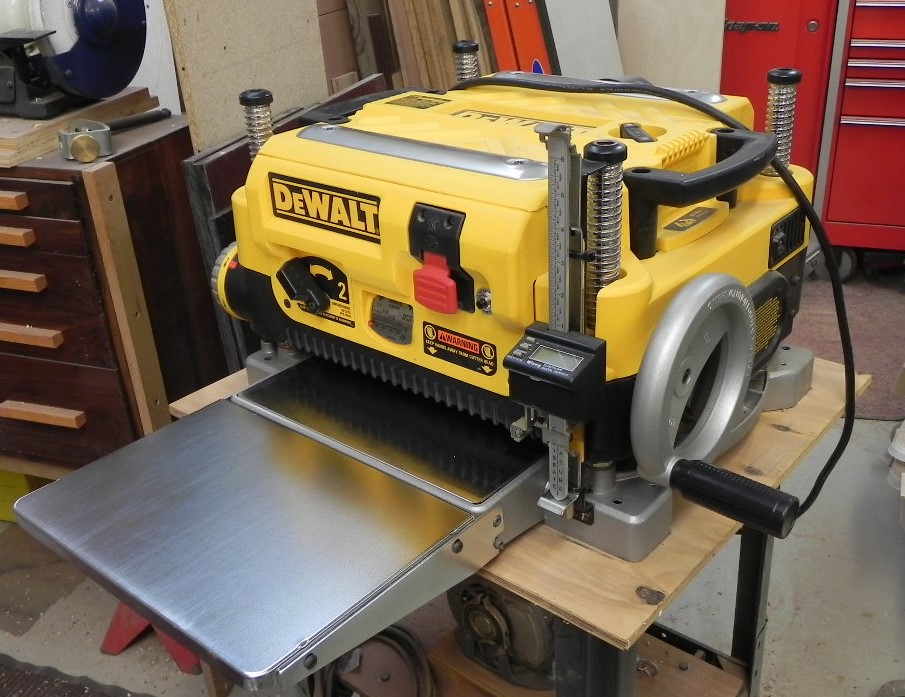
I have a DeWalt planer that is found in many hobby and professional shops. This planer is upgraded with a spiral cutter head that allows surfacing material that doesn’t do well with flat knives. I have used other planers and found this one produces the best finish. Exotic woods are often very hard to plane and not have chip out, and with a spiral cutter I have little to no chip out. This tool is also upgraded with a Wixey digital readout that allows me to plane wood to exacting thickness numbers. This isn’t always necessary, but helps if you have to plane another board in the middle of a project, and you need to be close to the others without planing them all again. It is nice to be able to know within thousandths of an inch where the board is.
Several years ago Lowes ran a special on this jointer, I needed one and found it on sale for about $300. There are limitations to this machine, but for my use it has been one that has never failed to give the edge I need. Until recently this tool still had the factory style knives in it, but recently was upgraded to the Sheilix cutter which allows for better planing with carbide cutters. The upgrade cost about as much as the machine, but can’t buy another machine for the same money. I get better jointed edges, and no tear out on exotic woods like I did before. The down side to this machine is you cannot find replacement parts. They are obsolete, so anything you need you have to find generic, fortunately, it’s not needed much over the years.
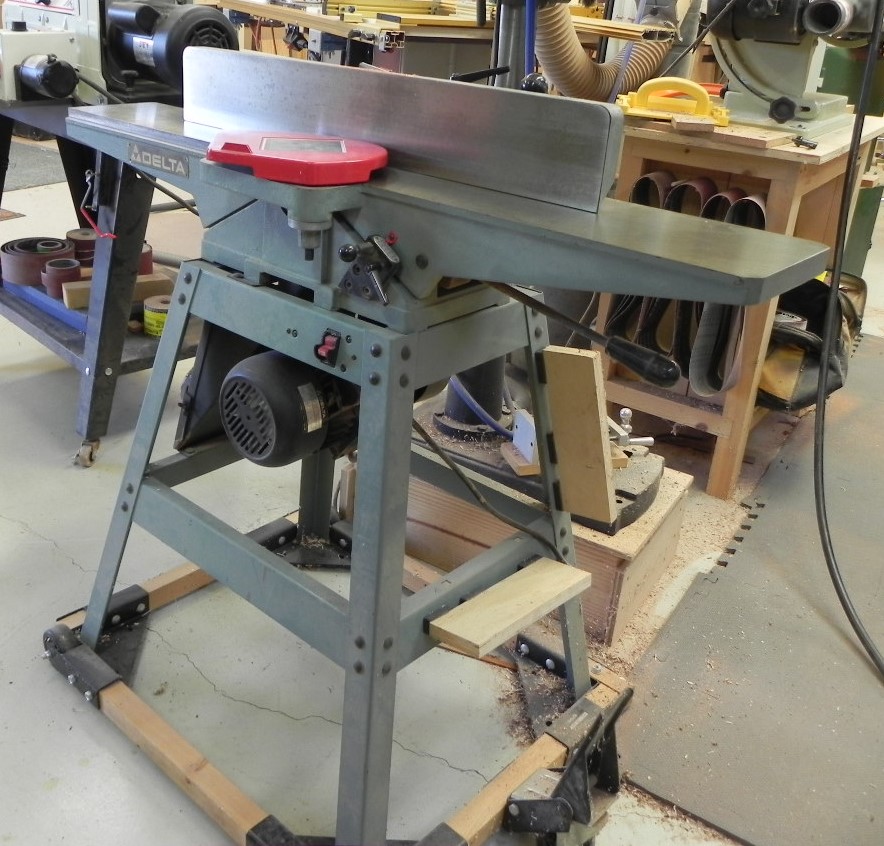
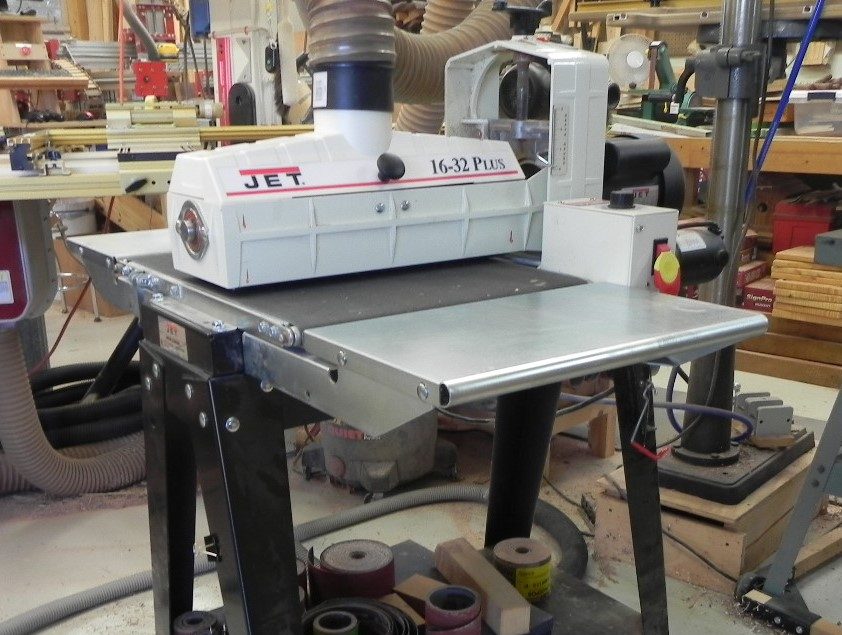
This Jet 16-32 drum sander came to my collection of tools around 2015, I kept trying to flatten cutting boards and chess boards that I made in a way that was far too much work, too much time spent in sanding and never could get them as flat as I wanted. I saw someone using a sander like this and the results were good enough to convince me that this investment was worth every penny. I can change sanding grits in about a minute and usually run 80, then 180, and finally 220 grits before going to a random orbit tool.
No shop should be without a drill press, once one finds its way into your shop you may wonder how you ever made anything without it. I had a smaller bench-top version that wore out mostly because I demanded more of it than it was made to do. This floor model is more robust, and is another “on sale” item from Lowes. Upgrades that I have done include an Incra-Fence and table, and a compressed air nozzle to blow away chips. I use Incra tools in much of my shop work, the precision is great, and this tool gets fence stops and other items that only add to the things I can get done with this tool. Others have used a vacuum dust collection system on a drill press, but the system I have is already taxed with hoses, hard to get any more on without a redesign (which is coming one day).
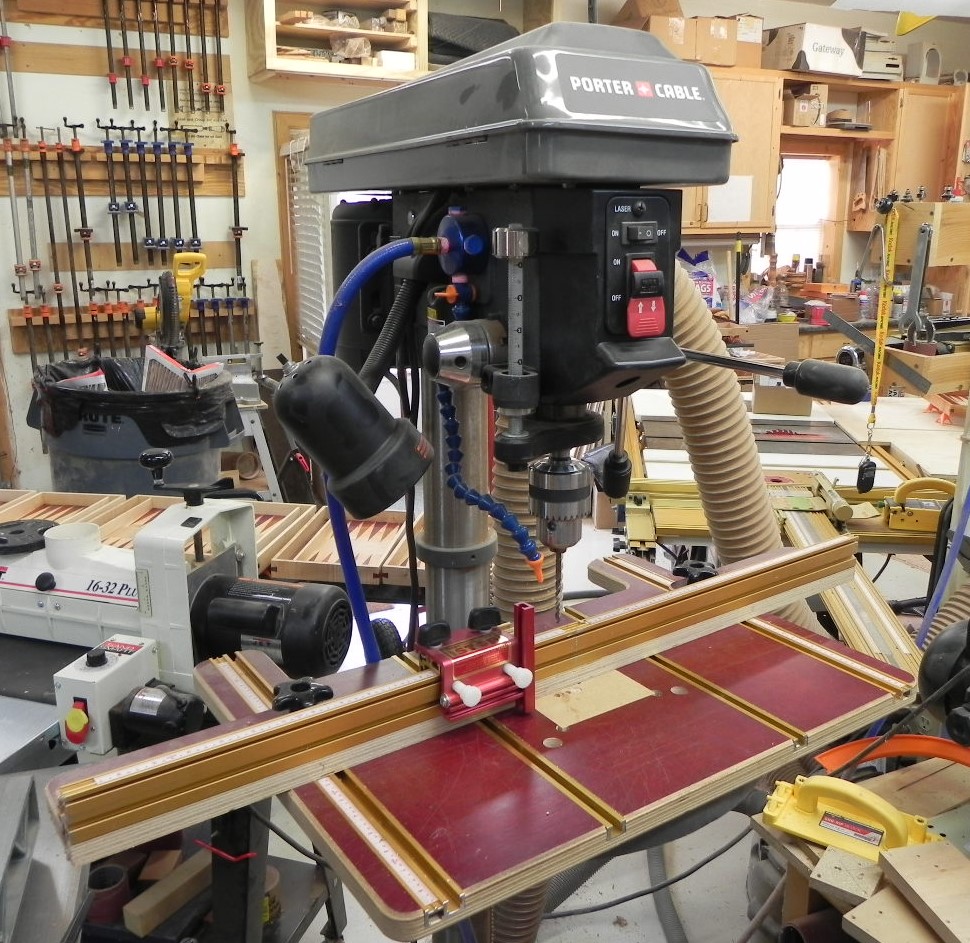
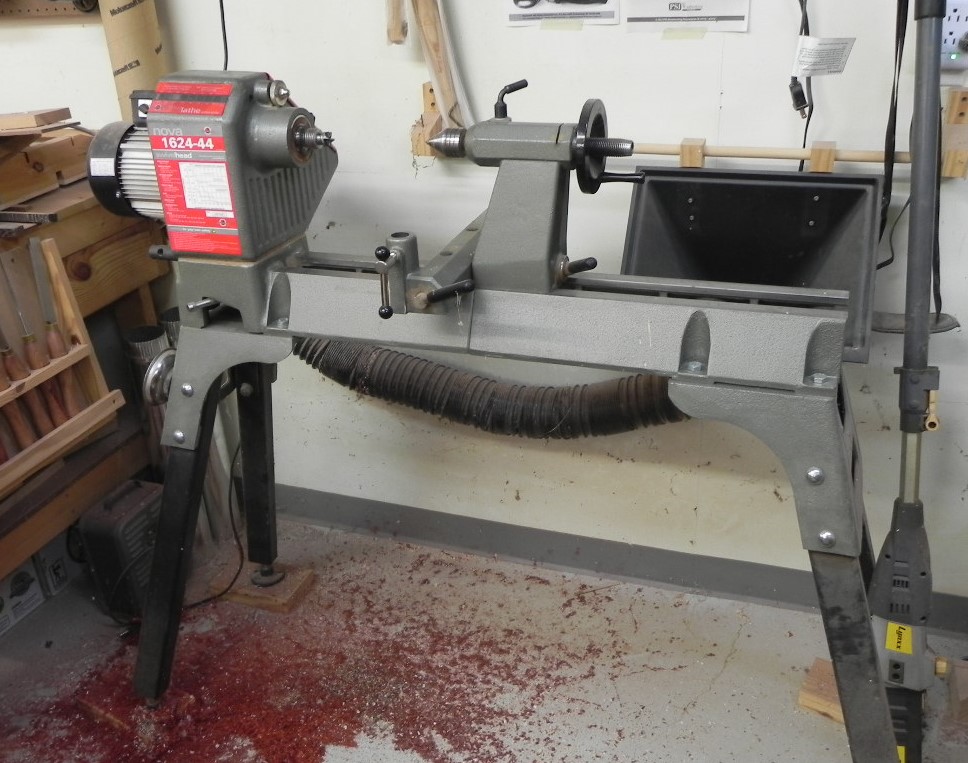
I enjoy turning, it is a kind of woodworking that is unlike any other. I enjoy turning all kinds of material, and projects from pens to large spindles. I have made a couple of bowls but not to the extent that many turners do. This Nova lathes is from Woodcraft. I wanted a variable speed lathe, but the price point was just too much given how much I turn. I think that I would prefer a Powermatic lathe if I were to every upgrade from this one. Another negative point that Nova has, its spindle size is unique to that make, no other parts fit without adapters. I also have two Jet Mini Lathes that I use to turn pens.
A good compound miter saw is something I use almost every day. I have a Craftsman radial arm saw that has not been used in years, this miter saw is as accurate and so much safer to use than a radial arm. This particular saw came from Lowes, and was on sale for about half its normal price. I had a working saw, but did not have the same features this one has. There are features of other saws that this one does not have, but they are minor in comparison to the positive things. I did not buy the stand for this saw, I don’t have room for it, so I use roller stands from Harbor Freight, easy to tuck away when not in use. I did a dust collection upgrade in 2023 that I got online from Shop Nation, The factory dust collection was about like not having any. The upgrade misses very little of the sawdust produced. I will try to post some new pictures of the changes.
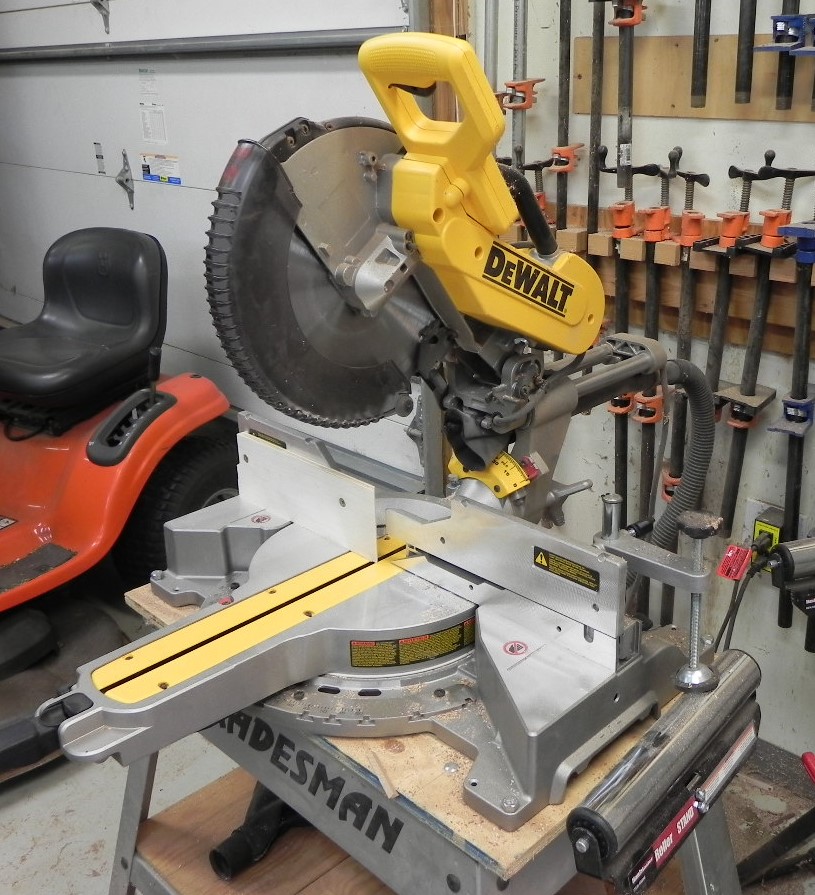

This Rikon band saw came from Klingspor in Hickory NC. I upgraded from an old Craftsman saw that was sold to me from the second or third owner. The Craftsman was a small machine that was not capable of resaw work which is primarily what I use the saw for. This saw can take a resaw blade and has enough power to go through all sizes of wood that I need it to. I upgraded the guides to better bearings, upgraded the fence to one that has a nice tall resaw fence. There are few negatives on this saw, one being dust collection. I believe that dust collection could be improved, and I have made changes that seem to work but should already be on the machine. I do believe that this is one of the best machines for the money.
The table saw. This is my second table saw to own. My first was a Craftsman contractor saw with lots of upgrades, but it never had what this saw has. This is my long time wanted upgrade, a Saw Stop cabinet saw. It’s a 1.75 hp saw, and seems to be powerful enough for what I work with. I didn’t put it on a mobile base as I never moved the other saw that was on one. I moved all my router tables and Incra fence from the old Craftsman saw to this one, everything fits perfectly, even though there’s a 35+ year difference in when they were acquired. I am quickly falling in love with the features of this cabinet saw.
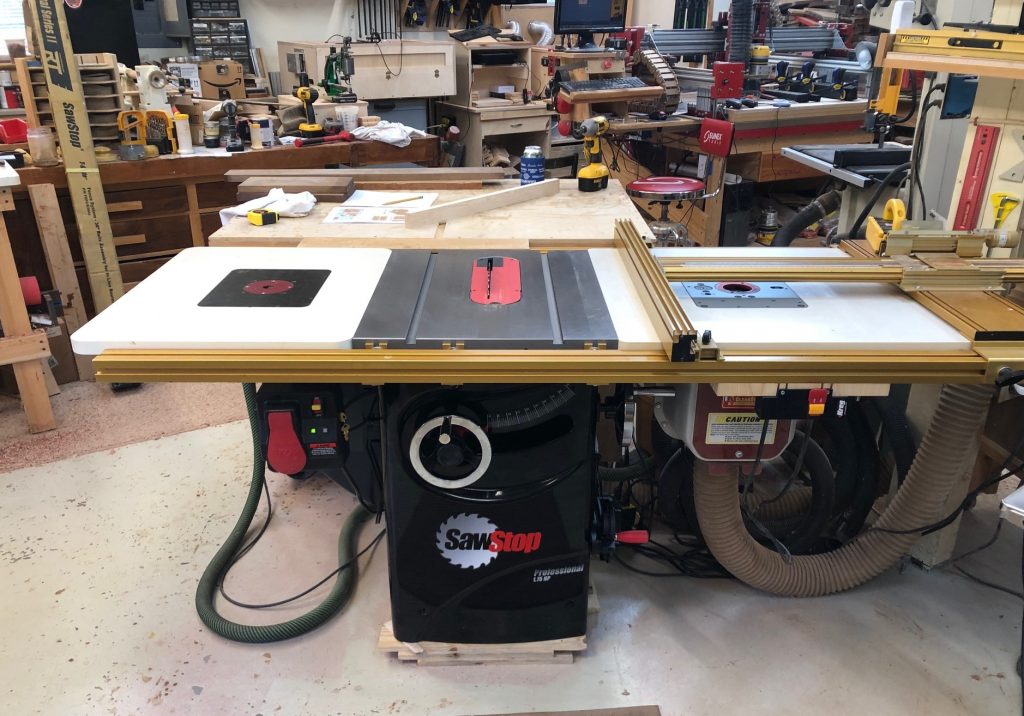
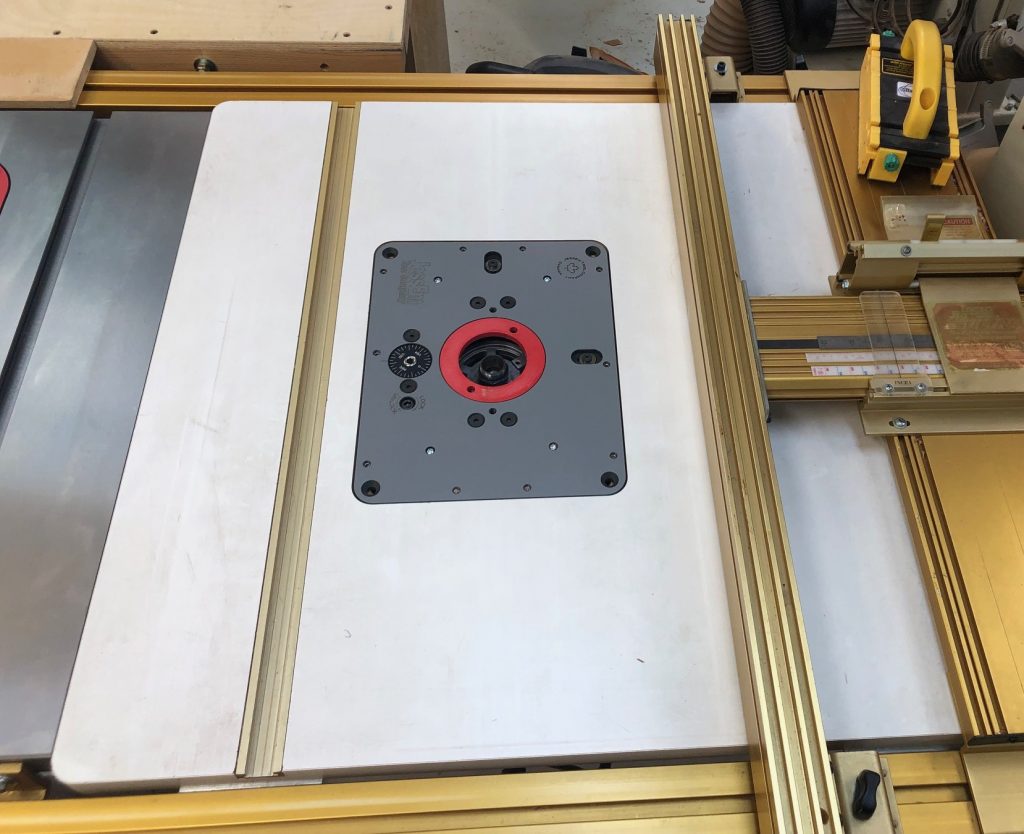
My main router table is mounted on the right side of my table saw. It shares the fence system which includes the joinery package that Incra sells. The lift system is a Jessum lift that has a Dewalt router attached that will take 1/4″ and 1/2″ bit shaft sizes. There is a dust collection system attached to the lower part of the table, and the fence system also has dust collection available. The precision of the fence system is in 1/64″ increments, with a dial adjustment that goes down to 0.001″. For woodworking that might seem extreme, but I use that kind of tolerance often. The router lift also has that kind of adjustments.
This spindle sander (right side) is an inexpensive tool, but the value of it is far more than the cost. This was purchase to sand parts that I make for games that I sell on Etsy, other kinds of sanding methods were not working. The dust collection on this tool is far better than I expected.
The belt/disc sander (on left) is also a cheap tool, but worth the money for my use. I found dust collection on this tool poor, so I changed how the hoses hook to the tool and improved that part about as much as I can. Belts are easy to change, discs are not. I have a shop made dust collection selector to concentrate recovery of dust from the tool in use by a small shop vac.

The Shop In General
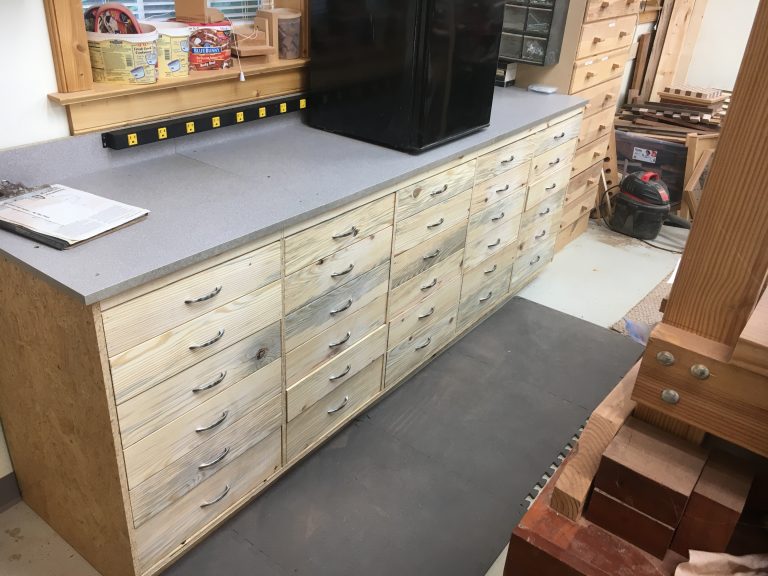
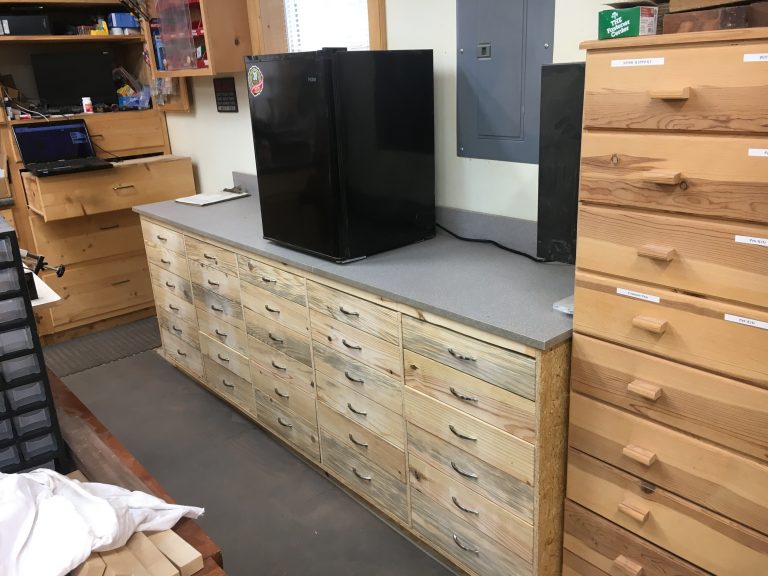
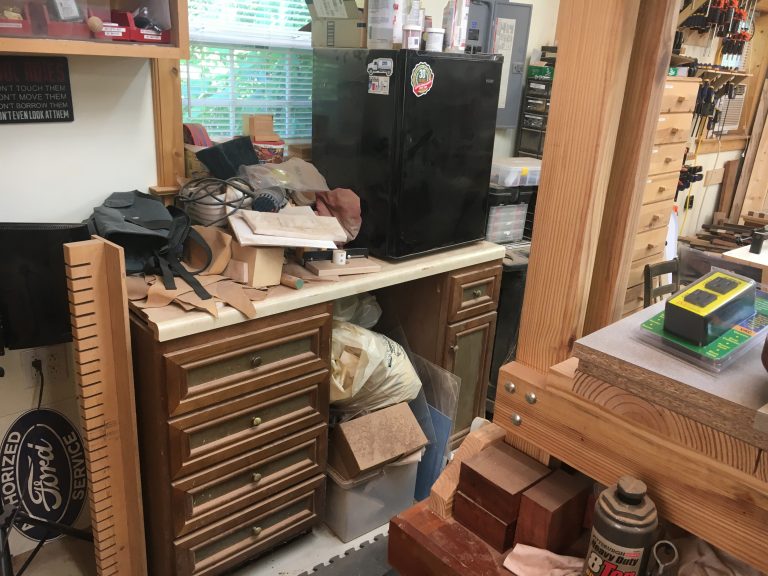
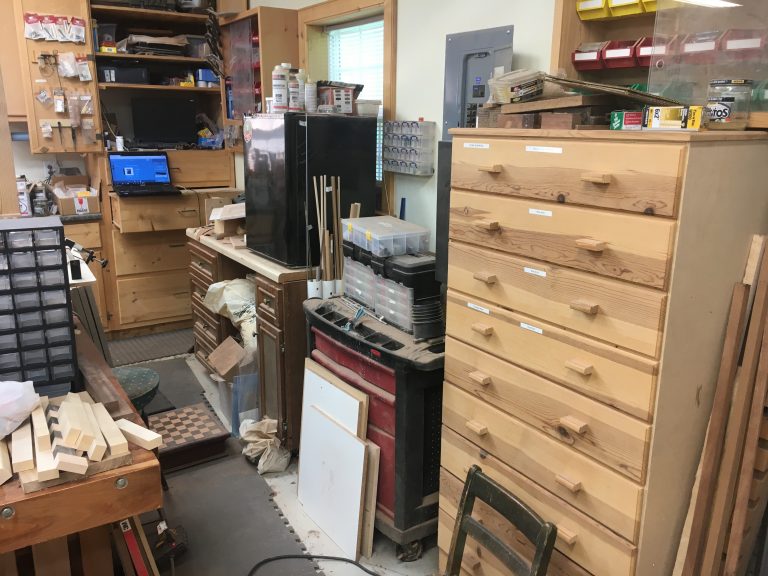
Here is an area of my shop that is often used but very difficult to navigate. It was getting dangerously crowded, and storage space had run out. I bought some rough pine from a lumber supplier in Statesville NC, and made this 30 drawer storage unit. The material is cut to about 5/8″ thick. The drawers are supported on the sides by hardwood runners, often found in 19th century work. I found this saves some drawer space and costs little to nothing as I have scraps of hardwoods all over. The counter top is recycled divider material for computer desks in a computer lab. Clean up is an ongoing thing, and there will be more storage solutions to come. I made a similar set of cabinets as these into an outfeed table for my table saw. Those cabinets are on castes that allow me to clean underneath as needed. No shop has enough space for all the tools and wood bits that accumulate. You can never have too many storage drawers!
